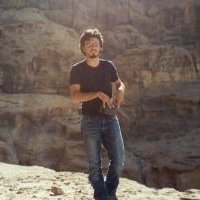- History, Archaeology, Cultural History, Medieval Studies, Landscape Archaeology, Medieval Archaeology, and 47 moreArchaeology of Buildings, • Topography, Photogrammetry - Geodesy: technical surveys and topographic calculations, technical digital photogrammetry, Technical Surveying and GPS, Computer application in archaeology, Photogrammetry, Archaeometry, Archaeological Method & Theory, 3d Modeling, Laser Scanning, Digital Terrain and Surface Modeling, Digital Photogrammetry, Light Archaeology, Acheologia, Archeologia Pubblica, Archaeology of Architecture, Post-Medieval Archaeology, Archeologia Postmedievale, Archeologia dell'architettura, Stratigraphic analysis of standing buildings, Archeologia Leggera, Public Archaeology, Archeologia medievale, Medieval History, Archeologia dei paesaggi, Digital Humanities, Museum Studies, Digital Archaeology, Digital Culture, Humanities Visualization, Museums and Exhibition Design, Virtual Archaeology, 3D Modelling (Architecture), Archaeology of Jordan, Shawbak, Computer Graphics and Virtual Reality, Armenian Studies, Silk Road Studies, Medieval Architecture, Archaeology of the Silk Road, Mamluk Studies, Ayyubid history, Crusader Archaeology, Computer Applications in Archaeology, Crociate, Cultural Heritage, Cultural Heritage Recording, Documentation and Information Systems, Cultural Heritage Management, Storia medievale, Castle Studies, and Tuscanyedit
- Lapo Somigli is a medieval archaeologist, specialized in IT application for historical and archaeological research. H... moreLapo Somigli is a medieval archaeologist, specialized in IT application for historical and
archaeological research.
He studied at the University of Florence with Prof. G. Vannini (Chair of Medieval Archaeology). In
2013 he defended his PhD dissertation in History and Information Technology at the Alma Mater
Studiorum – University of Bologna. His work focused on power structures in medieval Montalbano,
a rural area in central Tuscany, and the development of a historical and archaeological data
management system.
Since 2018 Dr. Somigli has been a post-doctoral research fellow at University of Florence within an
interdisciplinary project on digital humanities. He is also Adjunct Professor of geomatics
(Specialization School of Archaeology) and of Digital Humanities (SAGAS Department of the
University of Florence).
He has participated in numerous excavations and research projects in Italy, especially in Tuscany,
and abroad. He is a member of the Italian archaeological mission in Jordan 'Medieval
Petra–Shawbak Project'. In addition to archaeological analyses of medieval buildings and
excavation activities, he collaborates in the realisation of the IT architecture for archaeological data
management and three-dimensional archaeological surveys.
Since 2014, he has been a member of the Italian Archaeological Mission in Armenia 'The Making
of the Silk Road in Armenia' (University of Florence and Yerevan State University), where he is in
charge of the three-dimensional surveys of artefacts and architectural structures. He is also
specialized in photogrammetry, GIS (Geographic Information System) and spatial analyses.edit
This book analyses the dynamics of settlement and power in medieval Montalbano, for centuries a frontier area contested by competing powers. The architectural evidence, particularly religious, is investigated archaeologically as... more
This book analyses the dynamics of settlement and power in medieval Montalbano, for centuries a frontier area contested by competing powers. The architectural evidence, particularly religious, is investigated archaeologically as manifestations of power. Starting from the study of the technical knowledge of medieval master masons, the cultural, economic and political dynamics of an area to which the frontier gave centrality and supra-regional exchanges, especially during the 11th century, have been reconstructed. It is no coincidence that this centrality diminished from the following century when the growing influence of Pistoia’s municipality was matched by material standardisation. The contribution given to research and data analysis by the use, also experimental, of computer tools (3D, GIS) is also fundamental.
